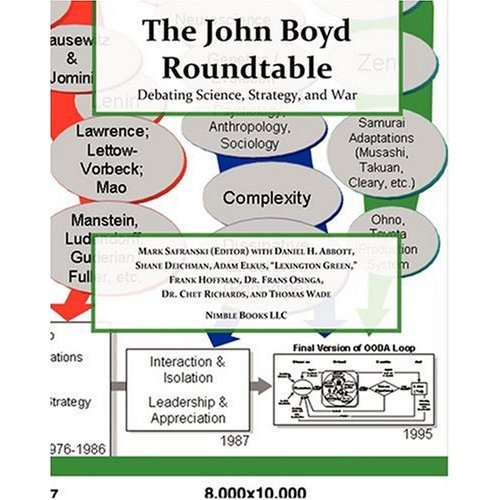Galrahn at Information Dissemination:
Admiral, Do You Tweet Sir?
….In no small part due to a comment in the article by John Nagl, the Small Wars Journal gets an honorable mention in this article as an example where new media is having influence in the national security debate. While it is possible other areas of new media are having a similar effect, I would argue the Small Wars Journal is the exception, not the rule, and is the only place this is happening. What makes the Small Wars Journal unique?Because it is where active and retired members of the military want to debate their ideas, want their opinions in the open source on any given topic, and Dave has tapped into a community that has become comfortable with their ideas debated in an open forum. The Small Wars Journal has the capacity to “help shape the public debate about national security policy” primarily because those involved in the debate have found value participating in the public debate.
As I have noted in the past, each military service has taken a unique approach to new media. The article highlights unique examples where our military leadership has found utility within new media to introduce and discuss their message. I follow all of these discussions, and they have all met the same challenge: the discussion is still one way and while there is a network, it is yet to become a truly interactive network of idea sharing, or just as relevant, idea shaping.
….What is the role of new media in the national security debate? I have asked this question on the blog since I began blogging, and have seen some brilliant answers in my email and in the comments. This CSM article added another slide to a brief I am building that answers this question. I think it is a really good brief, but the question I still haven’t answered is whether the better audience for the brief is the military services, or the think tanks. That John Nagl hasn’t suggested CNAS buy the Small Wars Journal from Dave suggests to me that the think tanks somehow believe the Web 1.0 model they all currently use will somehow stay relevant in the rapidly evolving information age.
Read the rest here.
Very interesting thoughts by Galrahn and I agree with his assessment of the value of SWJ as it evolved under the stewardship of Dave Dilegge and Bill Nagle though I’m not certain SWJ is unique so much as it is a succcessful “first” because Dave and Bill did everything right. They allowed a community to form from the ground-up without trying to ramrod an ideological agenda. Sure, SWJ is primarily about COIN but opposing views are invited, welcomed, heard and debated because the moderators are honest brokers and that imparts credibility to the entire enterprise. Intellectual integrity begets quality as well as quantity in terms of readership and submissions.
Tradtional think tanks are not set up to do what SWJ does because they come with either ideological baggage (Heritage, Brookings Carnegie) or institutional affiliations (SSI, CNA, Hoover) that preemptively circumscribe membership, discussion and research interests for fear of drying up the revenue stream. Few large donors, be they Uncle Sam, Richard Mellon Scaife or George Soros, are motivated to open their checkbook by the idea of unfettered inquiry and unlimited time horizons or providing a platform to their professional or political opponents. Attempts by official orgs to imitate SWJ will result in costly but sterile echo chambers. Genuine Web 2.0 interactivity is not desired because it is spontaneous and unpredictable but without that interactivity there’s no spark, no insight and no intellectual productivity.
The Obama White House just started a “blog” but despite the sleek visual design, “The Briefing Room” is a very Web 1.0 format. Media expert Jay Rosen of Press Think on Twitter described it as “press releases” and scanning the posts leads me to agree with him. It’s very hard for established legacy entities – even one now filled with techies – to embrace the risk of uncontrolled discussion. Perhaps the blog should be farmed out to whatever Obama is calling his private political action group; lacking comments or an authentic, personal, voice The Briefing Room is likely to become a tepid EOB version of Dipnote – except even less interesting.
The SWJ Model can be replicated for other fields but the requirements of independence, community-building, intellectual diversity, relative transparency, openness to membership and free debate appear to be non-negotiable elements. Features, not bugs.

 you have an established network of people with whom you have a reason to be in frequent contact and a common set of interests. I have that on twitter with a sizable
you have an established network of people with whom you have a reason to be in frequent contact and a common set of interests. I have that on twitter with a sizable 




